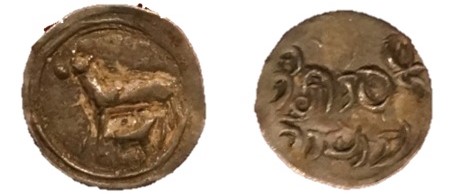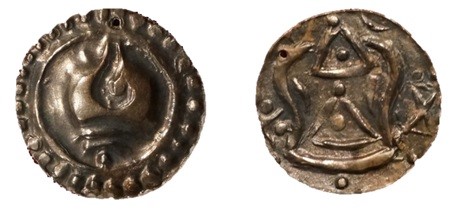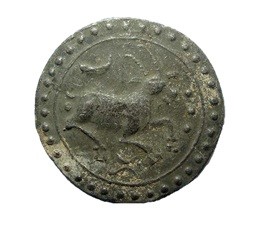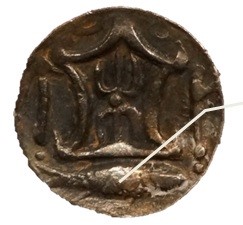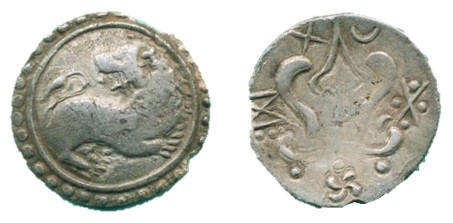Nathikan Chantayod*
In ancient times human beings learned to live in accord with nature; they used things in their surroundings as symbols in order to communicate both within their own community and without. The symbols are various, including those of human beings, animals, objects, or supernatural beings.
In this way, symbols are some sort of system of communication made by human to represent their beliefs and views of the world. They are based on things that surrounded human life itself, and designate certain specific meanings. Communication by common translation of symbols makes societal life possible.
Anceint Painting
Using Animals as Symbols
Animals have long been a part of human life, for example, as livestock and working animals. Additionally, animals are also believed by some groups to be a representation of the gods. Such belief is prevalent in many cultures, for example, in ancient Egypt, India, China, as well as Southeast Asia. Animal symbols are used to convey meanings that implicate these beliefs, and reflect the lives of the people within a society. This is particularly evident when examined through archaeological evidence and artifacts.
Beliefs about Animals during Dvaravati Period
Dvaravati was a kingdom located in the Southeast Asian region. Its beliefs regarding animals were passed on from India through the cultures as well as traditions that travelled along trade routes and the spread of both Buddhism and Brahmin. Normally appear in art works are those deemed holy or auspicious, for example, elephant, lion, cow, deer, fish, or hybrid, mythical creatures, such as, Garuda, Naga, Narasingha, Vanasphati. These animals bear relevance to divinities and religions.
Dvaravati society was an agricultural as well as mercantile society. There were strong beliefs in fortunes, wealth, and fertility. In the most part, Buddhism was adopted. Animal figures that were found in important cities under Dvaravati culture mostly were used to decorate religious building, and as travel items such as seal, personal charms, and silver coins. The use of animal symbol is believed to have added the element of auspiciousness to the items.
Animal Symbols on Silver Coins in Dvaravati Period
Archaeological evidence suggests that during Dvaravati period there was inter-communities trade, and Indian-style mint coins were adopted as a currency. Several animal symbols were used on these coins to designate the king, the authority of the king, auspiciousness, fertility, and prosperity of the kingdom. These symbols includes symbols of a cow, a deer, a conch shell, fish, hare, and sangha. They were used alongside other symbols that were deemed auspicious. However, the meanings of these symbols are all according to either Buddhist or Brahmin beliefs. Forms and Meanings of Animal Symbols on Silver Coins during Dvaravati period Animal symbols that appeared on Dvaravati coins are as the following:
The Symbol of Cow – Calf
One side of the coin was inscribed ‘Sri Dvaravati Savarapunya’, which translates ‘the merit of King Dvaravati’, indicating that Dvaravati was ruled under a kingship. Another side of the coin was an image of a cow and a calf. According to old beliefs, cows were a kind of mammal that was beneficial to humans. The worship of cows had existed since the time of the Indus Valley Civilisation. It was mentioned in the Avesta that the cow was a symbol of the world of light and fertility. In Brahmin religion, Nandi the Bull was believed to be the vehicle for Shiva, one of the three Hindu gods. It has always had great significance in the coronation ceremony of Indian kings since the Vedic period. According to Buddhist beliefs, a cow is counted as one of the 108 auspicious symbols. It is also the symbol of Visahka day. In Dvaravati period, the symbols of a single cow, and a cow accompanied with a calf were a symbol of agricultural richness. It was seen as a support to the claim that the king had control over nature, resulting in a successful harvest.
2. A conch
The Symbol of Conch – Srivatsa
The conch symbolizes water, i.e. the source of fertility. It is a holy creature according to Brahmin belief; it is one of Vishnu’s personal weapons, called Shankha of Vishnu. It also bears some relevance with Sri Lakshmi who is the goddess of fertility. The conch is normally used in important royal ceremonies such as Rajasuya or the consecration of the king. It is also one of the symbols that appears on the Buddha’s Footprint. The conch symbol on silver coins from Dvaravati period means wealth, prosperity, and fertility. It is assumed that this type of coins was used as a common currency, or used in some sort of ritual. This is because large numbers of coins of this type, in a small size, were found in a large terracotta container at Khokkhochangdin archaeological site, U-Thong district, Suphanburi province.
3. A deer
The Symbol of Deer
In Buddhism, a deer is a symbol of Isipatana, an important location where Buddha gave the first sermon. Hence, a deer became the symbol of Buddha’s sermons and his mission to expand Buddhism. It was also used as a royal symbol to kings in several dynasties, for example, King Chandragupta of Maurya dynasty. In Dvaravati culture, the deer symbol was normally found in religious buildings alongside the symbol of Dharmachakra. In Brahmin religion, a deer is believed, according to the Vedas, to be the vehicle for Chandra. Deer skin was used as clothing for Brahmin; while its antler was used in royal ceremonies associated with the king’s vow-taking ceremony.
4. Fish
The Symbol of Fish - Srivatsa alongside other symbols
The fish symbol designates water and fertility. It is an auspicious symbol which was a result of the Indian influence. In Buddhism, fish is one of the symbols that appear on the footprint of Buddha, as a symbol of success and happiness. It usually appears alongside other symbols used in Brahmin religion, for example, Srivatsa, flag, and fly-whisk. Fish plays a significant role in the incarnation of Vishnu according to Matsya Purana or the legend of great flood, and the night of Brahma, which are important texts in Brahmin religion. Vishnu incarnated as a fish called Saphari to bring all beings to salvation. Fish is also associated with the legend of Sankha which is of great relevance to the Vedas. The fish symbol was often found alongside Srivatsa symbol on Dvaravati silver coins. It mainly symbolises fertility.
5. Hare
The Symbol of Hare – Srivatsa
In Indian culture, a hare is a symbol of the city and its people. According to Buddhist belief, hare plays the main role in Sasajataka. The hare is told to be a representation of virtue from charity, thus is a symbol of virtue. On some type of Dvaravati coin, the hare symbol appears on a lotus image. This is considered auspicious because the lotus symbol signifies birth and the Srivatsa symbol which appears on the other side signifies fertility.
6. Singha or a lion
The Symbol of Singha
Singha is revered as the king of the forest and the king of all animals, representing grace, strength, and bravery. The image of lion thus has long been used to symbolise the elite and the ruling class in Asian culture. According to Brahmin belief, lion is seen as the vehicle of divinity (the goddess Durga) and a representation of some other gods. In Buddhism, lion is regarded as the symbol of the Sakya dynasty, thus also is a symbol of the Buddhist religion. Therefore, the image of a lion of coins can indicate an incorporation of the belief regarding power, bravery, and authority into Dvaravati culture.
The use of coins with animal symbols was inspired by Indian culture in which symbolism from nature was prevalent. The symbols are to convey auspiciousness, fertility, and kingly authority. This type of coins was recognized both in Buddhist and Brahmin religion. However, there is no evidence that these coins were ever in circulation in India. It can be said that during Dvaravati period, the coins with animal symbols were commissioned by kings who were influenced by ancient Indian beliefs. These animals were deemed auspicious, as a symbol of fertility and royalty. They were further commonly recognised by the people within the same community; therefore played a central role for communal life in, namely in its political, religious as well as economic aspect.
* Curator, Practitioner Level at Bureau of Grand National Treasure, the Treasury Department


